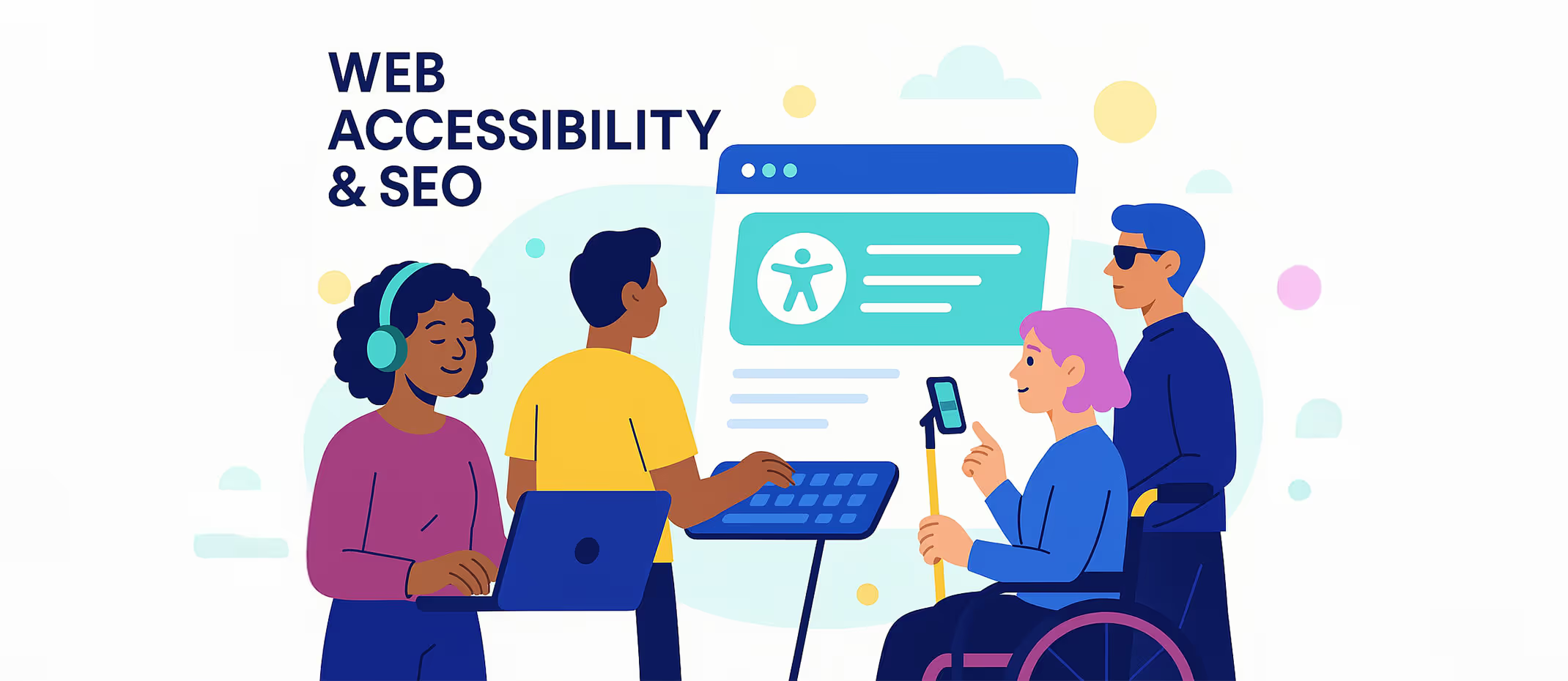What Is Web Accessibility?
Web accessibility refers to the design and development of websites, tools, and technologies that can be used by everyone — including people with disabilities. This includes visual, auditory, cognitive, motor, and speech impairments. The goal is to ensure equal access to information and functionality for all users, regardless of ability.
At its core, accessibility is about creating a barrier-free experience. From readable fonts and high color contrast to screen reader compatibility and keyboard navigation, accessible websites are usable by a wider audience — and that’s where it intersects powerfully with SEO.
How Accessibility Improves SEO (and Your Rankings)
1. Better User Experience = Better SEO
Google’s algorithm prioritizes websites that offer excellent user experience. Accessibility features like fast load times, structured content, and keyboard navigation improve usability for all users — and that helps increase dwell time, reduce bounce rates, and boost SEO.
Learn more from Google’s Search Central Accessibility Guidelines.
2. Semantic HTML & Structured Content
Accessible websites rely on semantic HTML, such as using proper heading tags (<h1>, <h2>, etc.), alt text for images, and ARIA labels. This structure not only helps screen readers interpret content but also helps Google better understand your page — making it more likely to rank for relevant queries.
Pro tip: Use tools like WAVE Accessibility Checker to test your HTML for accessibility errors.
3. Improved Mobile and Voice Search Compatibility
Accessible sites naturally align with mobile-first indexing and voice search trends. Features like clear labeling, fast page speed, and readable content benefit all users and match Google’s quality signals — making your site more discoverable across platforms.
4. Avoiding Legal Risk (and SEO Penalties)
Beyond rankings, having an accessible website helps you stay legally compliant with laws like the ADA (Americans with Disabilities Act) and WCAG guidelines. Legal issues can result in negative publicity and even SEO penalties if your site becomes untrustworthy or inaccessible.
Simple Accessibility Fixes That Boost SEO
Here are quick wins to improve both accessibility and SEO:
- Add alt text to every image
- Use descriptive link text (not just “click here”)
- Ensure all interactive elements are keyboard-accessible
- Provide video captions and transcripts
- Maintain high contrast for readability
- Use logical heading structure (
<h1>,<h2>, etc.)
Why This Matters for INKLU's users
Final Thoughts
Web accessibility isn't just a social good — it's a smart SEO strategy. From stronger Google rankings to more engaged users and legal peace of mind, investing in accessibility delivers powerful ROI.
👉 Ready to build an accessible, high-ranking community? Try inklu.app — the platform built for inclusive engagement and SEO-friendly growth.
